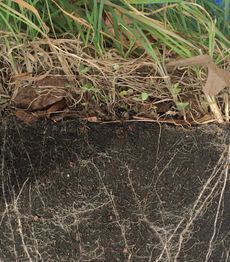Main Page: Difference between revisions
No edit summary |
No edit summary |
||
| Line 9: | Line 9: | ||
Algunas paginas en Espanol: | Algunas paginas en Espanol: | ||
[[Ecologia | [[Ecologia de Suelo]] | ||
[[Diversidad]] | [[Diversidad]] | ||
[[Biodiversidad del Suelo]] | [[Biodiversidad del Suelo]] | ||
Revision as of 22:36, 6 May 2019
Soil Ecology WIKI from the University at Buffalo

Soil is a vast reservoir for a wide diversity of organisms. Plant roots explore this diversity daily. Various other animals consume smaller creatures either intentionally or unintentionally by foraging on plant roots, insects, and microorganisms.
Soil ecology is the study of how these soil organisms interact with other organisms and their environment - their influence on and response to numerous soil processes and properties form the basis for delivering essential ecosystem services. Some of the key processes in soil are nutrient cycling, soil aggregate formation, and biodiversity interactions. Sometimes, individual species can strongly influence overall soil ecology, such as Black Willow The diversity and abundance of soil life exceeds that of any other ecosystem. Plant establishment, competitiveness, and growth is governed largely by the ecology belowground, with many interactions attributed to the interconnectivity of Plant roots due to Arbuscular Mycorrhizal Fungi and Ectomycorrhizal Fungi in the rhizosphere. Therefore, a deep understanding of these systems are an essential component of plant sciences and terrestrial ecology. You can read more about early soil scientists like Vasily Dokuchaev here.
Many of the concepts of soil ecology were developed by Hans Jenny and his creation of the Jenny Equation. These concepts envelop the ideas of the abiotic interactions of Organisms and plants.
Algunas paginas en Espanol: